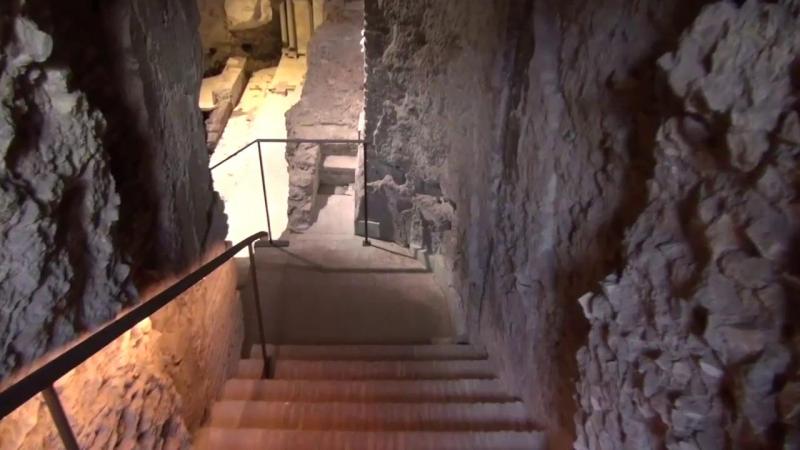Most people may be familiar with the Domus Aurea, the sumptuous palace Emperor Nero built in the heart of ancient Rome after the Great Fire of 64 AD had destroyed a large part of the city and the aristocratic villas on the Palatine Hill. But before moving his residence there, Nero lived in the so-called Domus Transitoria, a villa lavishly decorated with marbles, stuccos, polychrome walls, porphyry columns; the building connected the Palatine hill with the Esquiline hill, hence its name.
The Domus Transitoria, which was brutally robbed and excavated in the 18th century, has now been restored and open to the public, as part of a Nero-focused itinerary inside the Archeological Park of the Colosseum, extending from the Oppian Hill to the Palatine hill.
What visitors will be able to see is the space originally occupied by a rich nymphaeum with water features (water was widely present throughout the palace), a triclinium surrounded by columns of porphyry and polychrome marble pillars, where Nero spent his leisure time, two rooms with remains of frescoes, stuccos and marble floors.
Virtual reality technology will help fill the blanks and convey the atmosphere of the spaces and their lavishness. Multimedia installations introduce visitors to the history of the palace, how it fit within the urban fabric of the time and its relationship with the future Domus Aurea.
The palace of Nero can be visited Friday to Monday and is included in the new €16 SUPER Foro-Palatino ticket valid for one day.
The SUPER ticket allows access to the Criptoportico neroniano (the 130-meter tunnel where Caligula was thought to have been murdered, and which Nero later used to connect his Domus Aurea to the Palatine), the Palatine Museum, the House of emperor Augustus, the House of Livia (Augustus’ wife), the Aula Isiaca (an underground room belonging to a noble house from the Republican era, only recently reopened to the public), the temple of Romulus (built by emperor Maxentius in memory of his son Romulus), and Santa Maria Antiqua (one of the earliest surviving Christian churches in Rome, dating from the 6th century), the Domitian’s ramp, and the Palatine Museum, with display of frescoes from the Domus Transitoria which had been guarded at the National Archaeological Museum of Naples and are now returning to their original place after almost 300 years.











